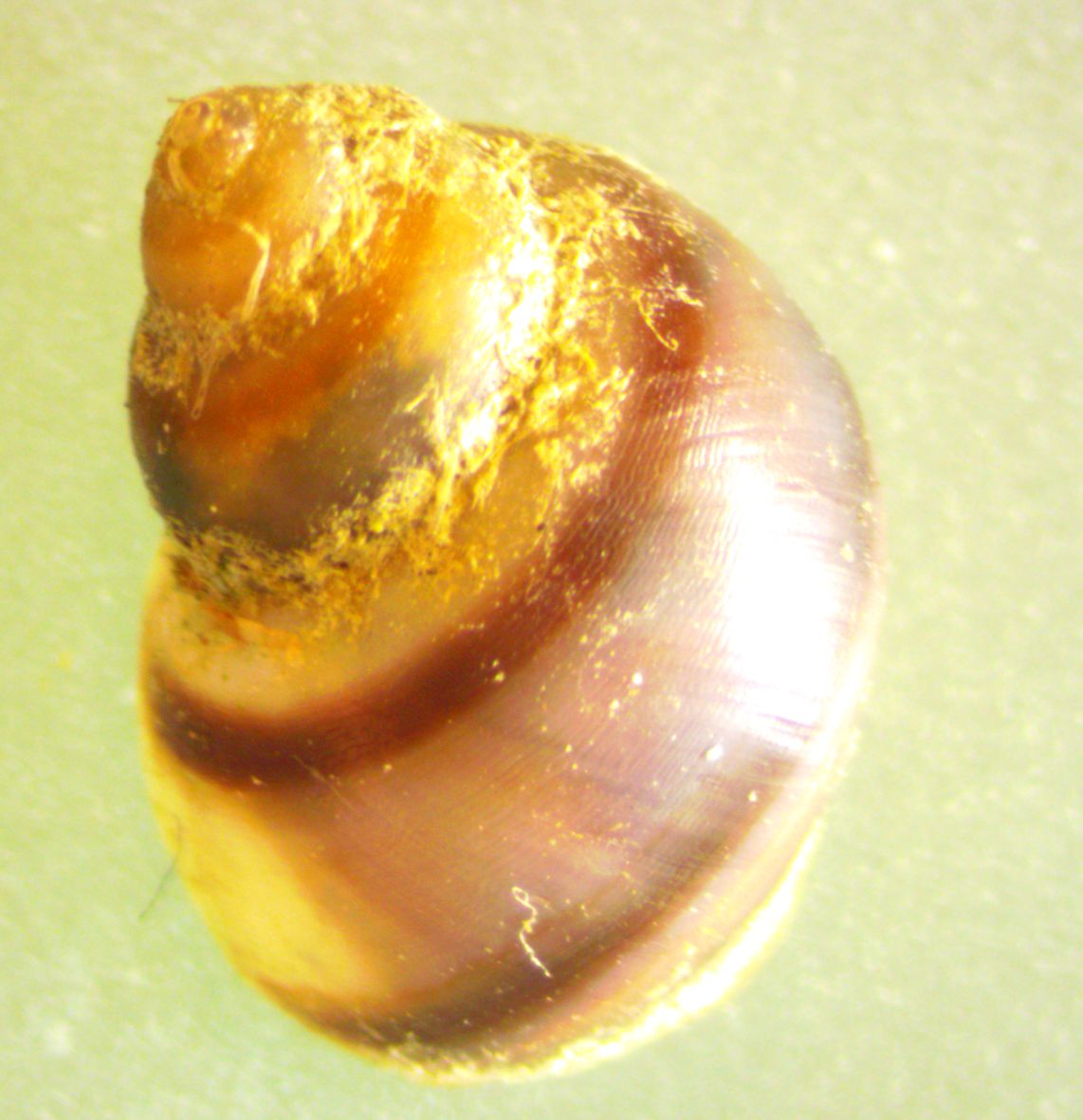Description: Shells in Family Littorinidae have no siphonal notch. The interior of the shell is not pearly. An operculum is present (photo). The height is greater than the diameter, but not several times greater. The columella has no folds or ridges (which go transversely--in this species there may be a longitudinal set of ridges with a groove between). Members of subfamily Lacuninae (chink shells) have a slitlike umbilicus between the columella and the body whorl (photo). Lacuna vincta has an aperture which is about half (or slightly over) the height of the shell. The shell is tan or brown, with a broad white spiral band and a slightly glossy periostracum. In these specimens, the open umbilicus is between two distinct white longitudinal ridges on the columella (photo). Height to 1.6 cm.
How to Distinguish from Similar Species: Lacuna variegata has brown chevrons instead of the white stripe spiraling down the shell, and is more common on eelgrass. L. vincta also is said to have an unusually wide aperture. The umbilicus of L. variegata is also not between 2 ridges on the columella, as it is in this species (photo).
Geographical Range: Alaska to California; unlikely to be found south of Washington. Also in the north Atlantic.
Depth Range: Intertidal
Habitat: On algae, usually on rocky shores.
Biology/Natural History: Lives and feeds on macroalgae, or lives on surfgrass or eelgrass and feeds on diatoms on the eelgrass surface. They are much more likely to be found on this vegetation than on rocks. They graze using the front few rows of teeth on their radula. The radula has about 47-94 rows of teeth (mean 69) (Grunbaum and Padilla, 2014). About 3 rows of teeth are formed new each day (Padilla et al., 1996), at the back of the radula, and move forward, so the animal feeds with the oldest teeth it has. Each row of teeth is of one of two forms: sharp-pointed teeth, found on animals grazing on macroalgae. These teeth are used to rip deeply into the macroalgae. The second form of teeth is more blunt, and is found on animals grazing on eelgrass or surfgrass. These teeth are used to scrape diatoms off the eelgrass surface. The teeth are of these two forms, without intermediates. The animals can move back and forth between eelgrass and macroalgae, and the form of new teeth they produce changes when they make the move. However, since they feed with their oldest teeth, there is a lag time between when they make a move and when their feeding teeth are optimal for the substrate they are on. (Grunbaum and Padilla, 2014)
Adults can disperse by producing a 'parachute' composed of a string of mucus. This allows the animal to drift with the current to a new location. Triggers for this behavior include lack of food, presence of predators, or physical disturbance.
Lacuna species hybridize readily and can be hard to distinguish. This species usually lives for 6-12 months and has separate sexes. Fertilization is internal. The female lays a small ring of eggs on eelgrass or kelp. They may lay eggs year-round, but most commonly in late spring/early summer around Rosario. The ring is greenish as first but becomes yellow as the eggs mature. After about 6 days the eggs hatch as planktonic veliger larvae. The larvae swim for 8-24 weeks before settling at a shell length of about 1 mm.| Return to: | |||
| Main Page | Alphabetic Index | Systematic Index | Glossary |
References:
Dichotomous Keys:Kozloff, 1987, 1996
General References:
Lamb
and Hanby, 2005
O'Clair
and O'Clair, 1998
Sept,
1999
Scientific Articles:
Fretter,
V. and R. Manly, 1977. Algal associations of Tricolia
pullus,
Lacuna vincta, and Cerithiopsis
tubercularis (Gastropoda)
with special reference to the settlement of their larvae.
Journal
of the Marine Biological Association of the United Kingdom 4: pp
999-1017
Grahame, J., 1977. Reproductive effort and r and K-selection in two species of Lacuna (Gastropoda: Prosobranchia). Marine Biology 40: pp 217-224
Grunbaum, Daniel, and Dianna K. Padilla, 2014. An integrated modeling approach to assessing linkages between environment, organism, and phenotypic plasticity. Integrative and Comparative Biology 54:2 pp 323-335
Johnson, Craig R., and Kenneth H. Mann, 1986. The importance of plant defence abilities to the structure of subtidal seaweed communities: the kelp Laminaria longicruris de la Pylaie survives grazing by the snail Lacuna vincta (Montagu) at high population densities. Journal of Experimenal Marine Biology and Ecology 97:3 pp 231-267
Martel, A. and F.S. Chia, 1991. Foot-raising behaviour and active participation during the initial phase of post-metamorphic drifting in the gastropod Lacuna spp. Marine Ecology Progress Series 72: pp247-254
Martel, A. and F.S. Chia, 1991. Drifting and dispersal of small bivalves and gastropods with direct development. Journal of Experimental Marine Biology and Ecology 150: pp 131-147
Martel, A., and T. Diefenbach, 1993. Effects of body size, water current and microhabitat on mucous-thread drifting in post-metamorphic gastropods Lacuna spp. Marine Ecology Progress Series 99: pp215-220
Padilla, D.K., D.E. Dittman, J. Franz, and R. Sladek, 1996. Radular production rates in two species of Lacuna Turton (Gastropoda:Littorinidae). Journal of Molluscan Studies 62: pp275-280
Thomas, Martin L., and Frederick H. Page, 1983. Grazing by the gastropod, Lacuna vincta, in the lower intertidal at Musquash Head, New Brunswick, Canada. Journal of the Marine Biological Association of the United Kingdom 3: pp 725-736
Yee, A.K., K.L. VanAlstyne, and D.K. Padilla, 2014. Chemical signaling in an inducible offence. Integrative and Comparative Biology 54(supplement 1): pp e252-275Web sites:
General Notes and Observations: Locations, abundances, unusual behaviors:
My first encounter with this species was individuals clinging to blades of red algae on the docks in Friday Harbor Marina, 2014.
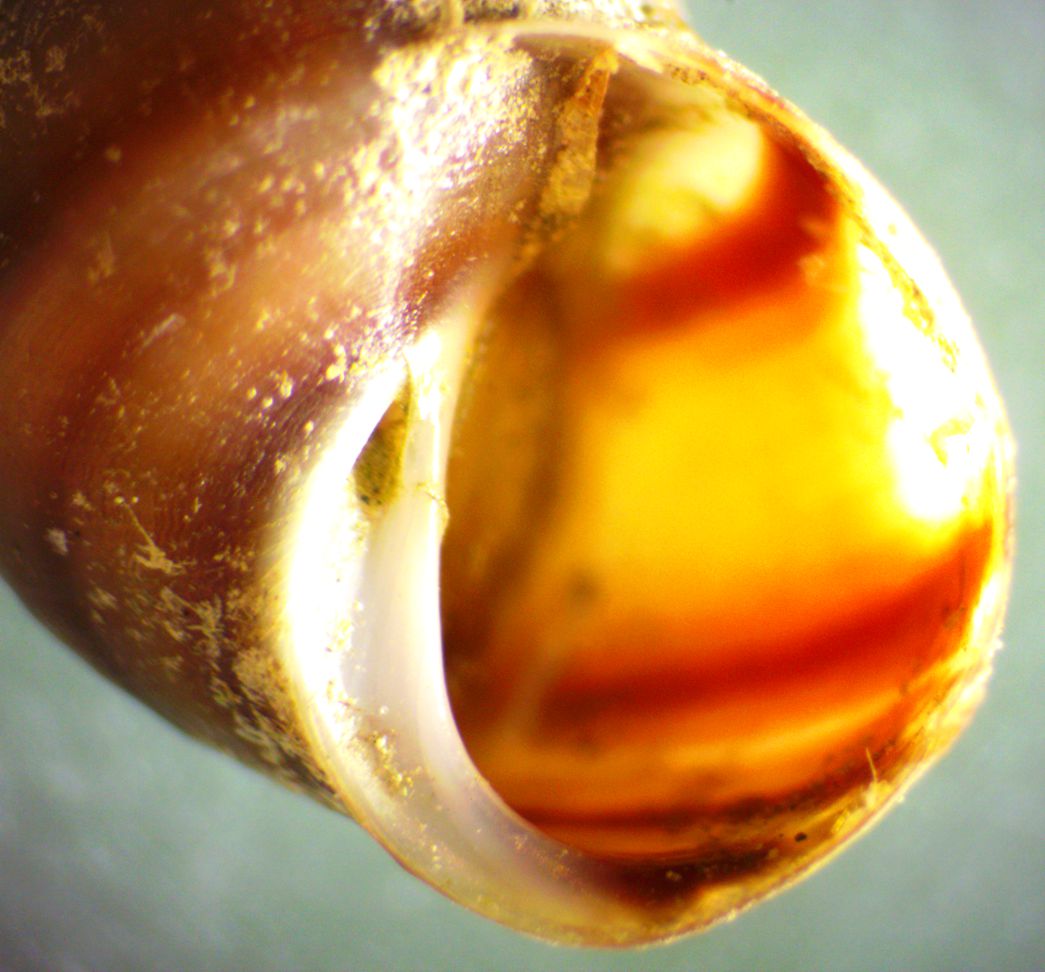
The species is shaped like a Littorinid
but has a slitlike open umbilicus.
In this species the umbilicus
is located between two parallel ridges of the columella,
as seen here.
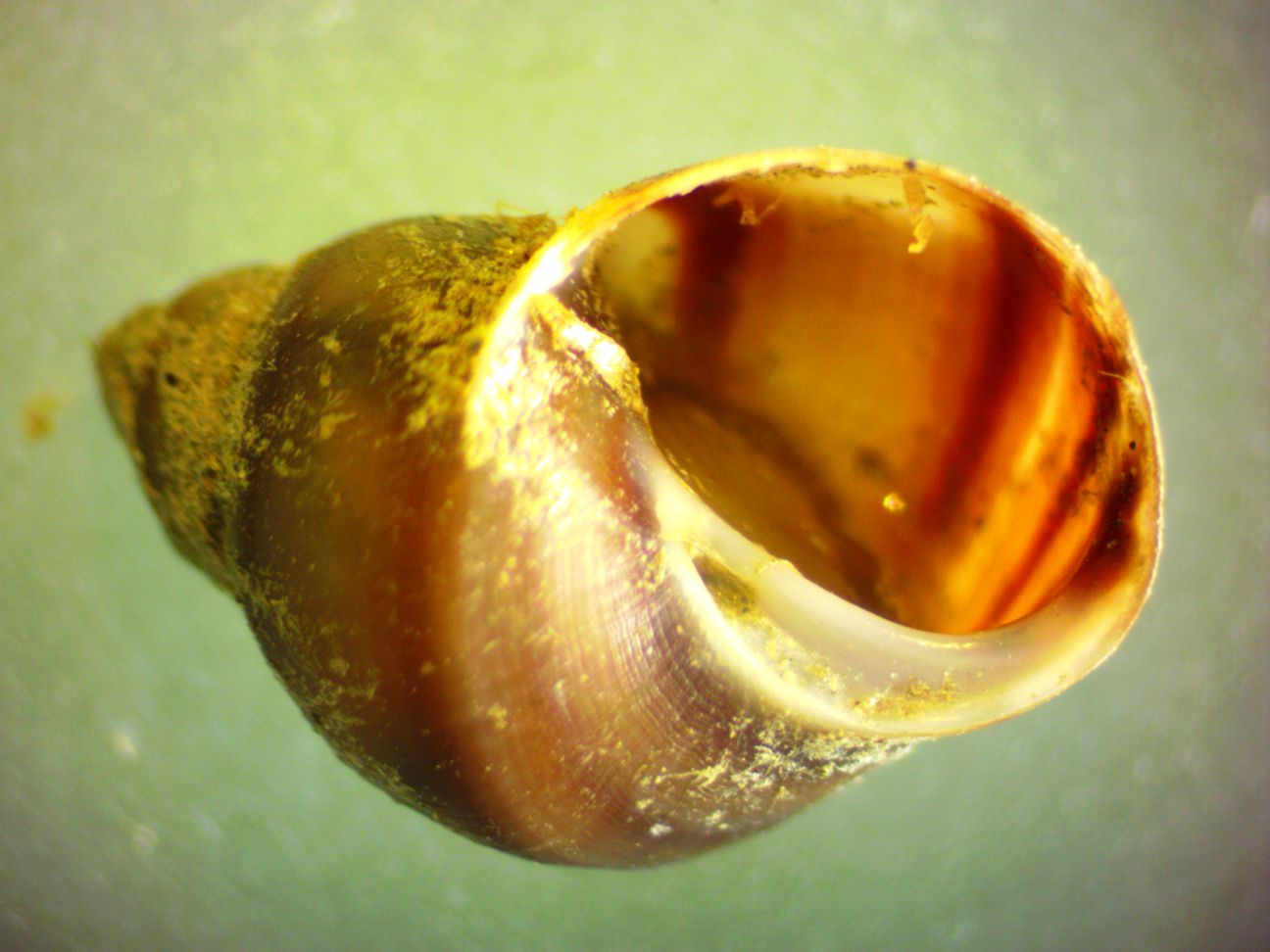
The species has a non-calcified operculum,
seen partially withdrawn inside the aperture. Note the visible open umbilicus.
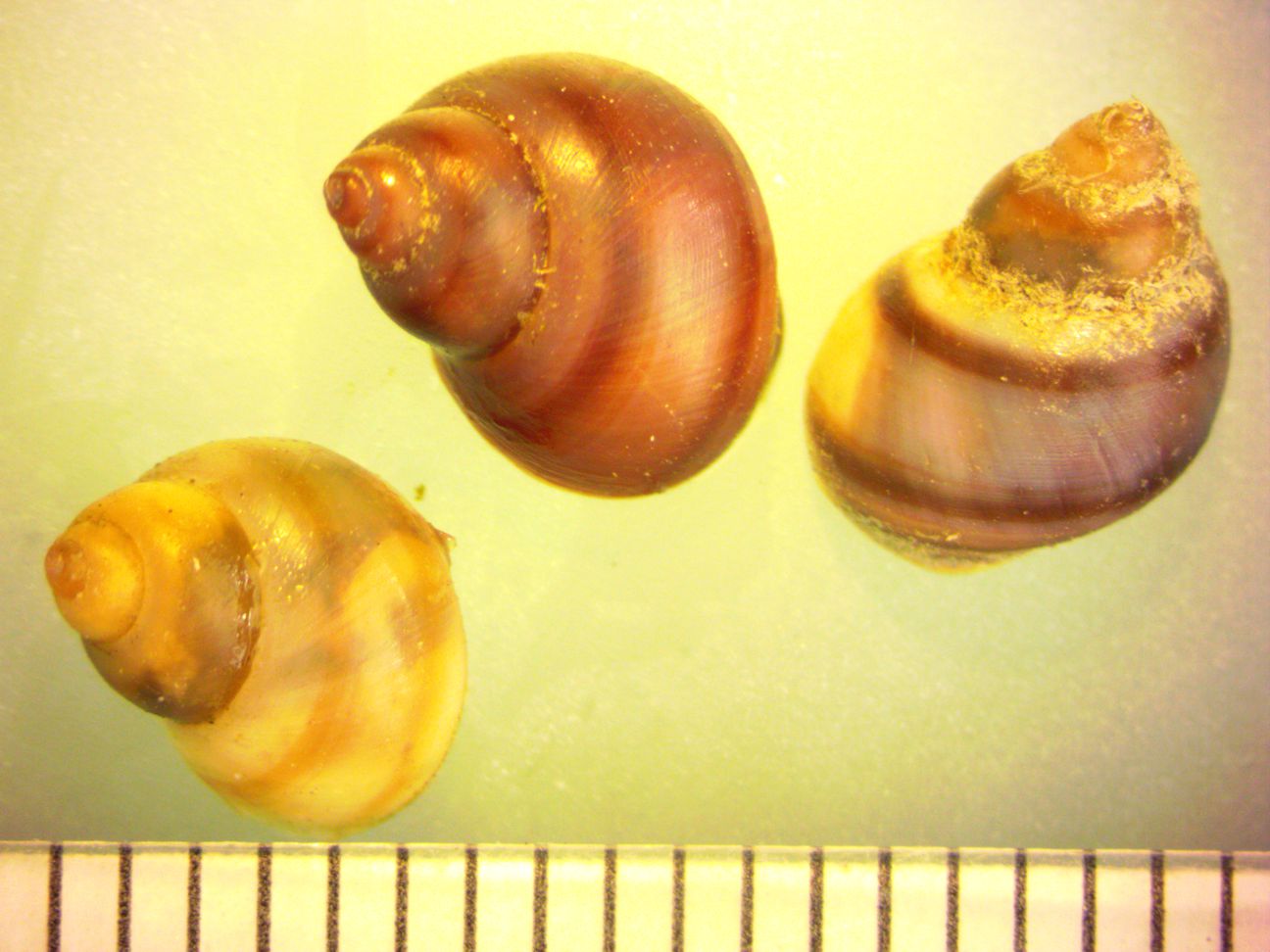
This photo shows some of the variation in coloration. The
rule
marks are 1 mm. All specimens from algae on Friday Harbor
Marina
docks.

This individual was found in Padilla Bay eelgrass 2018. Total length 7 mm. Photo by Dave Cowles
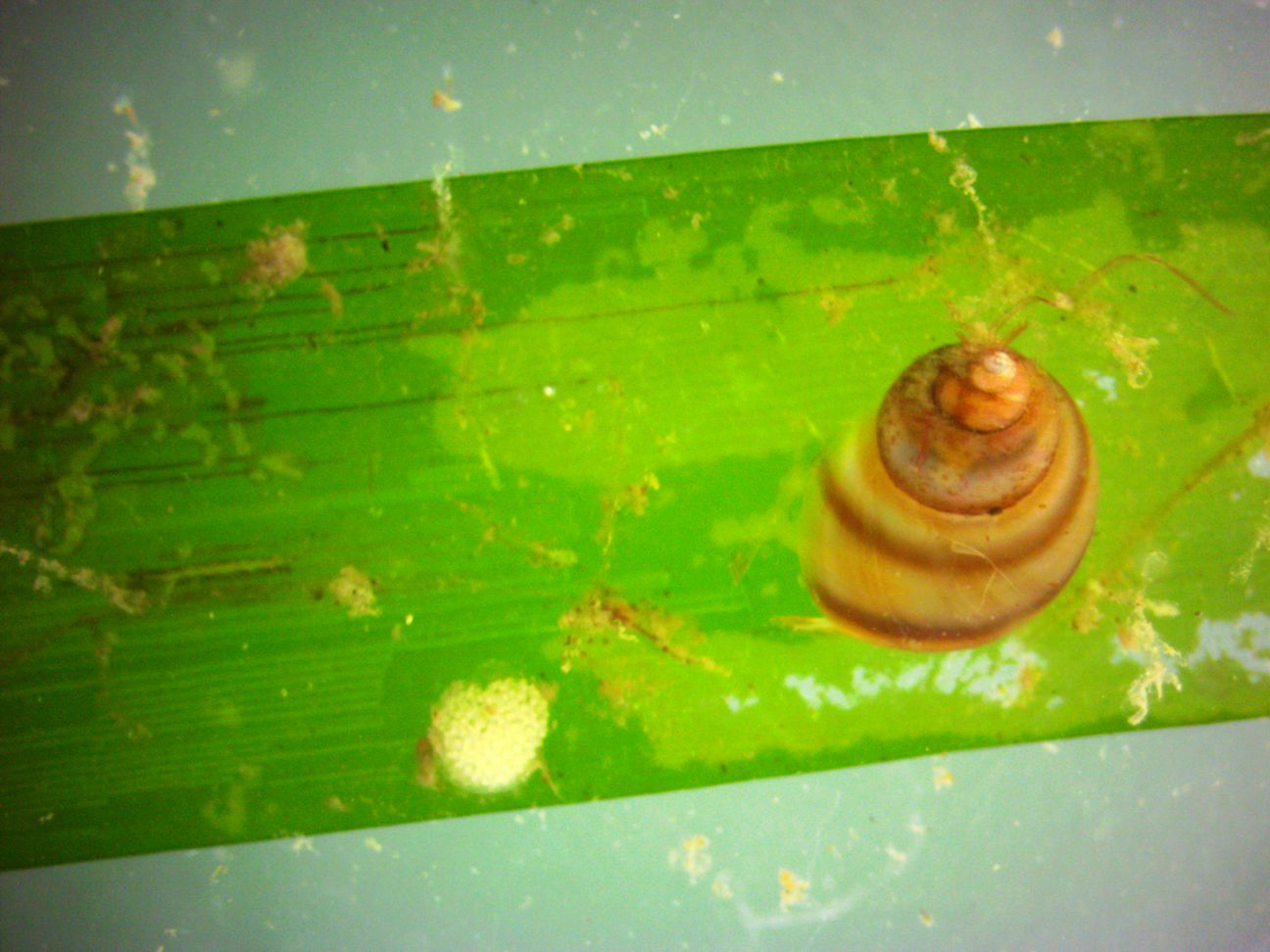
This individual has been laying eggs on the eelgrass blade. Photo July 2018 by Dave Cowles.
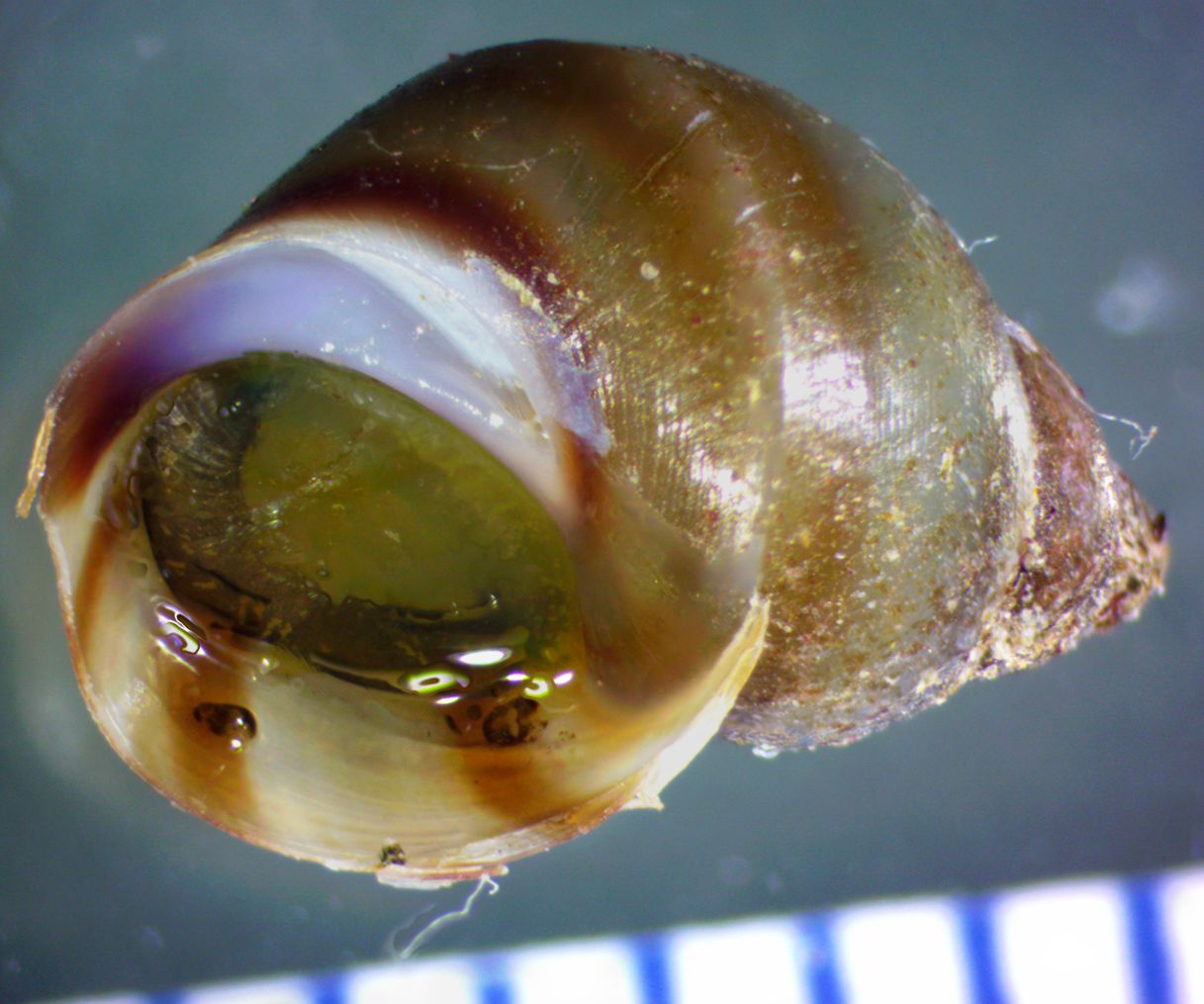
This stacked photo of the aperture and closed operculum was taken by Dave Cowles, July 2018. Scale = mm.
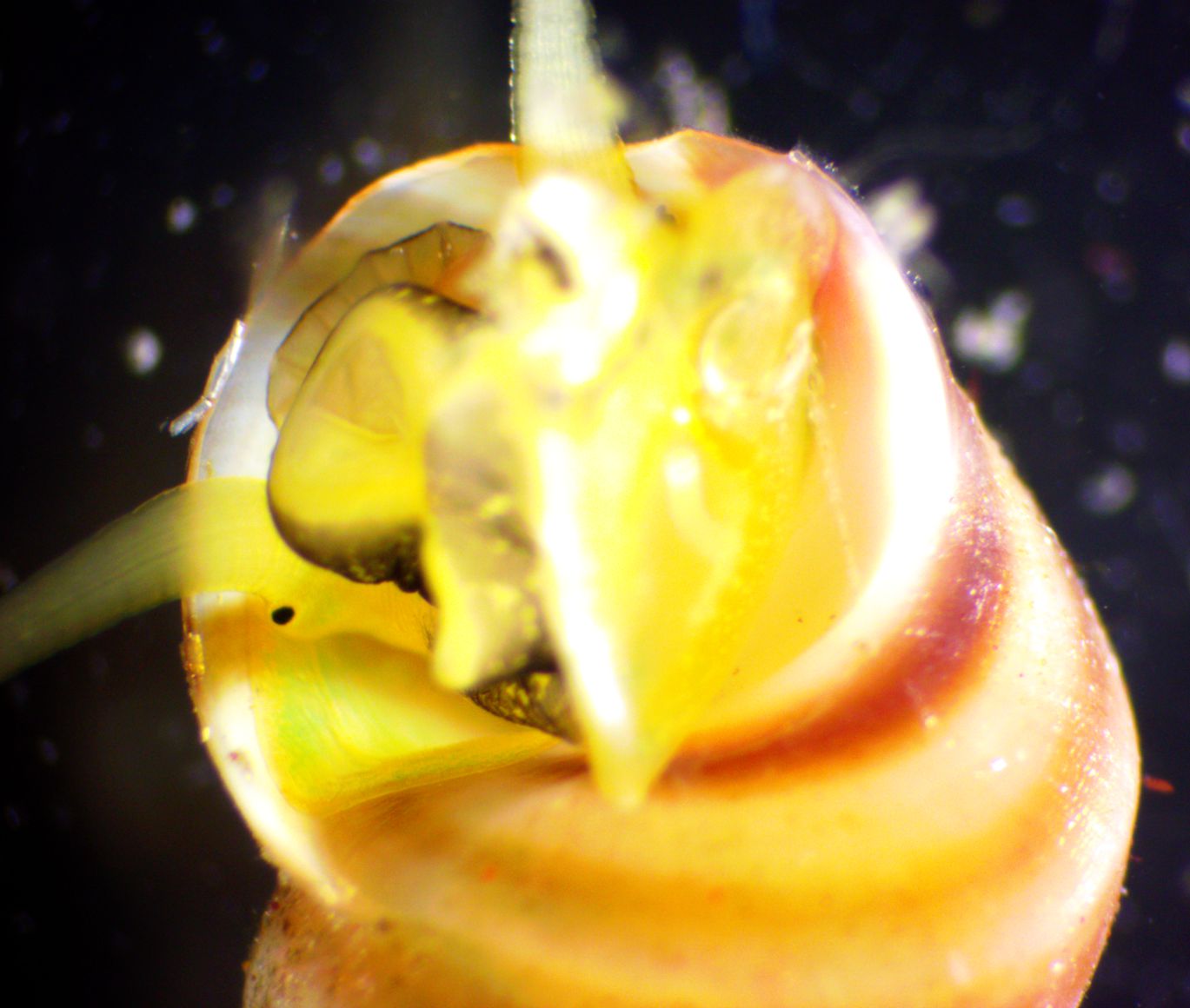
In this closeup of the aperture the animal pushes aside the operculum
(on the right) and its head and foot (left, see eye and front of foot)
begin to emerge from the shell . Photo by Dave Cowles, July 2018
Authors and Editors of
Page:
Dave Cowles (2014): Created original page
CSS coding for page developed by Jonathan Cowles (2007)
Salish Sea Invertebrates web site provided courtesy of Walla
Walla University
